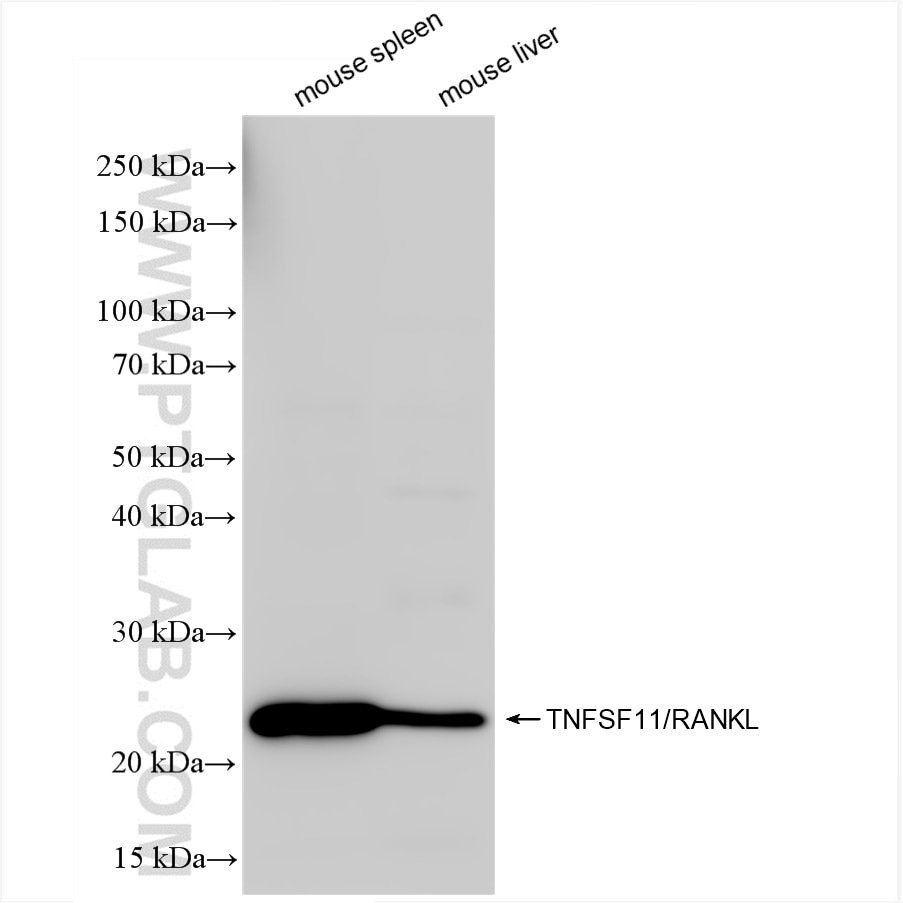Anticorps Recombinant de lapin anti-TNFSF11
TNFSF11 Recombinant Antibody for WB, IHC, Indirect ELISA
Hôte / Isotype
Lapin / IgG
Réactivité testée
souris
Applications
WB, IHC, Indirect ELISA
Conjugaison
Non conjugué
CloneNo.
241791B7
N° de cat : 84431-5-PBS
Synonymes
Galerie de données de validation
Informations sur le produit
84431-5-PBS cible TNFSF11 dans les applications de WB, IHC, Indirect ELISA et montre une réactivité avec des échantillons souris
| Réactivité | souris |
| Hôte / Isotype | Lapin / IgG |
| Clonalité | Recombinant |
| Type | Anticorps |
| Immunogène | TNFSF11 Protéine recombinante Eg1956 |
| Nom complet | tumor necrosis factor (ligand) superfamily, member 11 |
| Masse moléculaire calculée | 35KD |
| Poids moléculaire observé | 22 kDa |
| Numéro d’acquisition GenBank | NM_011613.3 |
| Symbole du gène | Tnfsf11 |
| Identification du gène (NCBI) | 21943 |
| Conjugaison | Non conjugué |
| Forme | Liquide |
| Méthode de purification | Protein A purfication |
| Tampon de stockage | PBS only |
| Conditions de stockage | Store at -80°C. 20ul contiennent 0,1% de BSA. |
Informations générales
TNFSF11, known as Tumor Necrosis Factor Superfamily Member 11, also known as RANKL (Receptor Activator of Nuclear Factor-κB Ligand), TRANCE, etc., is a member of the Tumor Necrosis Factor (TNF) superfamily.RANKL is a type II homotrimeric transmembrane protein located primarily at the plasma membrane. RANKL is a type II homotrimeric transmembrane protein located mainly at the plasma membrane, and in addition to the membrane-bound form (mRNAKL), it can also be cleaved by proteolytic cleavage of the cell membrane to produce the soluble form (sRANKL). The membrane-bound form of RANKL is the main form involved in triggering the RANKL/RANK signaling pathway and mediating osteoclastogenesis. Current studies have shown that TNFSF11 acts primarily in the immune and skeletal systems and has been implicated in the pathogenesis of degenerative bone diseases, carcinogenesis, and asthma.







